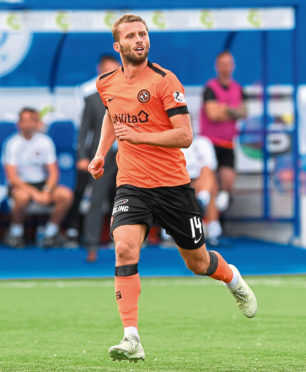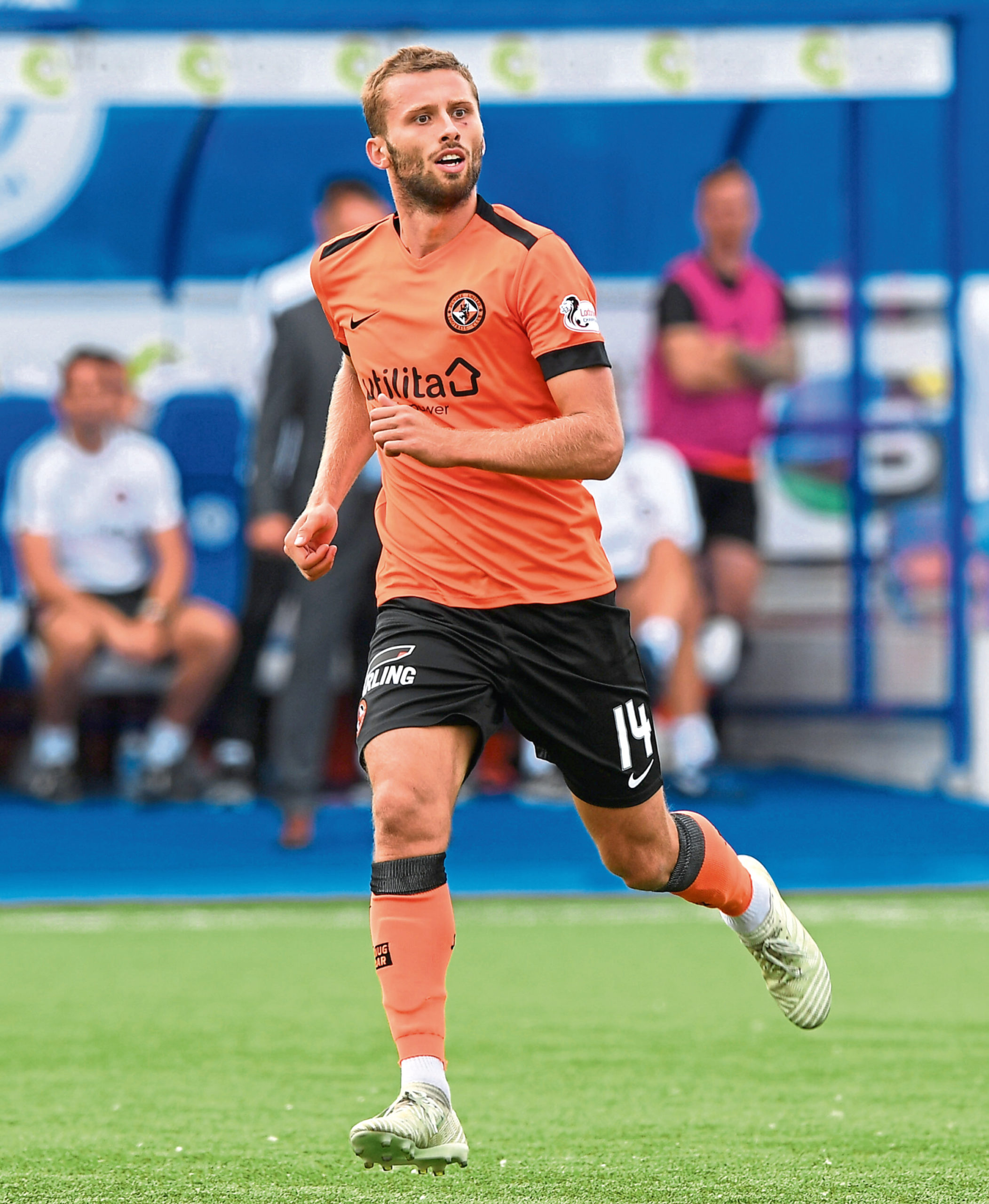A feature of Dundee United under Robbie Neilson has been the high-pressing game he’s introduced since taking over early this month.
Under previous boss Csaba Laszlo, the Tangerines tended to be a side who dropped off and retreated inside their own half when they lost possession.
The key to that strategy was not to give other teams the ball and, for a while, the game stats were showing Laszlo’s United were dominating it.
As time passed and things started going wrong, increasingly that became a problem. Other outfits in the Championship quickly worked out while getting the ball quickly was an option, if that wasn’t on they’d have time to get the ball under control and pass their way up the pitch.
As Partick Thistle, Inverness Caley Thistle and now Dunfermline have discovered, it’s been all change under the new manager.
When his team lose the ball they will work hard, fast and high up the pitch to get it back as quickly as possible.
That brought them their goals in Robbie’s opening game at Firhill, when for both strikes home players actually had good possession in their own half but were caught out by the speed with which they were closed down.
And in the draw against ICT and in Saturday’s win over the Pars, a feature of United’s play was the number of times they won the ball back in, or near, the opponent’s defensive third.
Watching from the stands, what is striking about the new policy is the amount of ground it involves the attacking players covering. At the sharp end has been Pavol Safranko. Fortunately for United, as well as being a talented goalscorer, the Slovakian prides himself on his work-rate.
At the weekend he almost literally ran himself into the ground – going down with cramp in injury time and being forced off.
Not far behind have been the attacking midfield trio of Paul McMullan, Fraser Aird and Billy King. As well as being expected to get forward and get on the ball, there is little respite for them when the other team’s defenders have it.
Delighted as he’s been with that quartet’s attitude to a side of the game creative players do not always relish, Robbie stressed the system only works and will continue to, if every outfield player buys into it.
One chink in the armour though and he knows it will fall apart, allowing the other team to find men with space and time to hurt United.
“Pavol’s been great. I know that he’s a very good player and, as I’ve said, I knew about him before I came here because I’d seen him play at Aalborg (the on-loan man’s parent club),” said the gaffer.
“But we also have McMullan, King, Aird, the boys behind, doing a lot of running as well.
“And I’m a big believer that when we go and press, even when we’re attacking, the defence have got a big role to play in it as well.
“If we’re asking forward players to go and run 50, 60, 70 yards to go and press people, then the midfielders and defenders have to do it as well.
“There is a responsibility on them to go and do it as well. As a team we are getting better at it, but it’s early days, we’re only three games in.”
That note of caution possibly stems from the fact, although he’s been pleased with the way the players have taken to the tactic, the next couple of weeks could provide sterner tests of it.
Partick and the Pars have been struggling for form and while Inverness remain the only unbeaten second tier team, as five of them in a row indicates, they have become the draw specialists of the division.
Up next are Queen of the South and leaders Ross County, two sides who might just be better equipped to cope with the high press.

